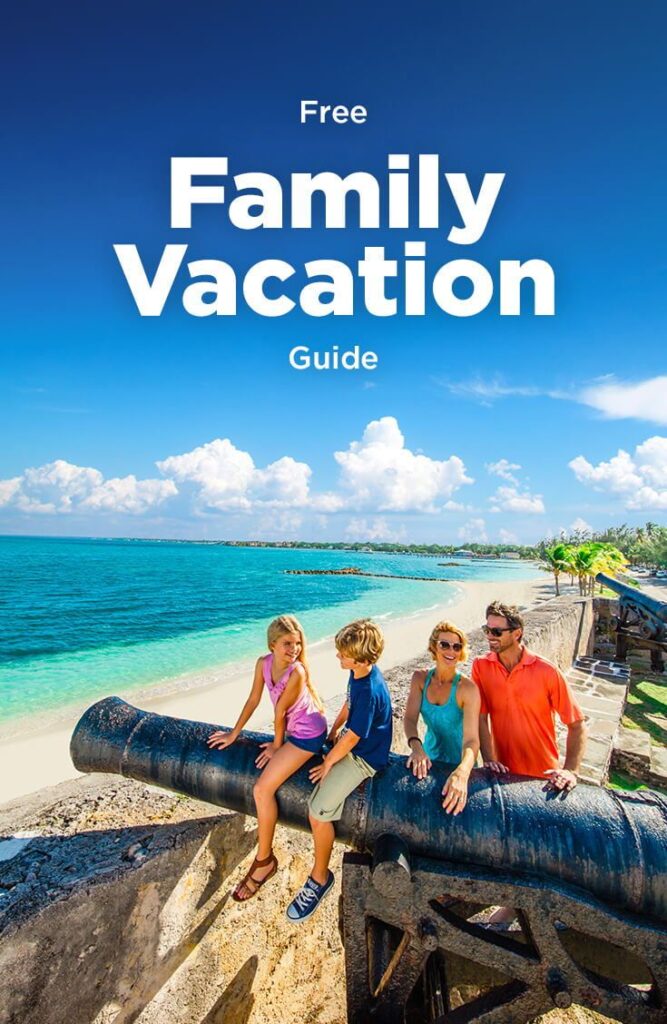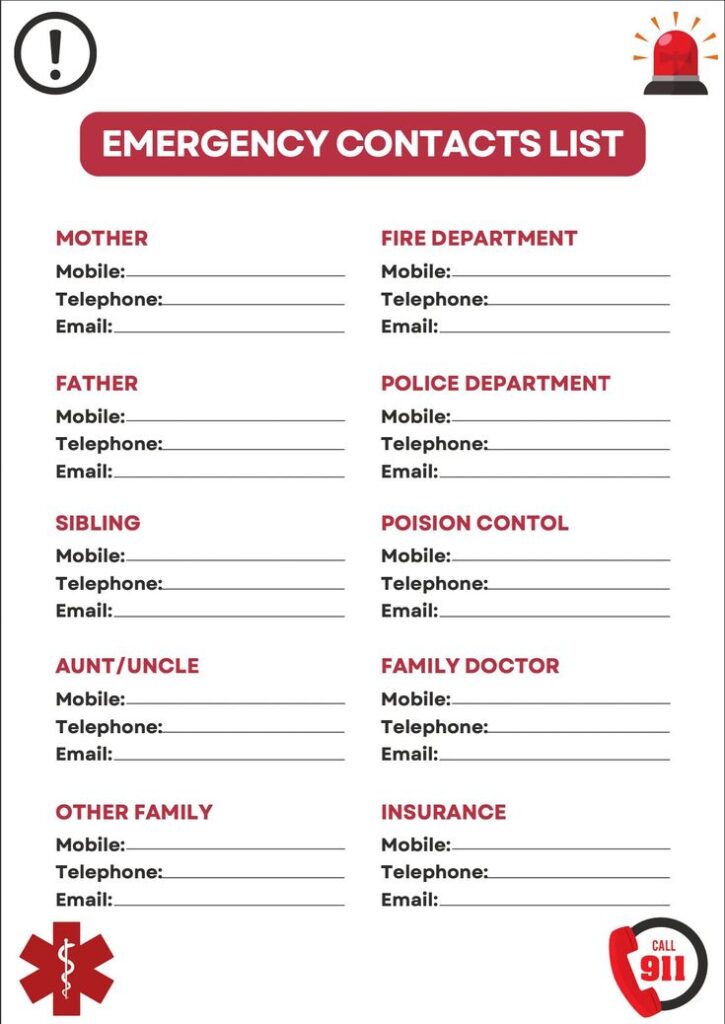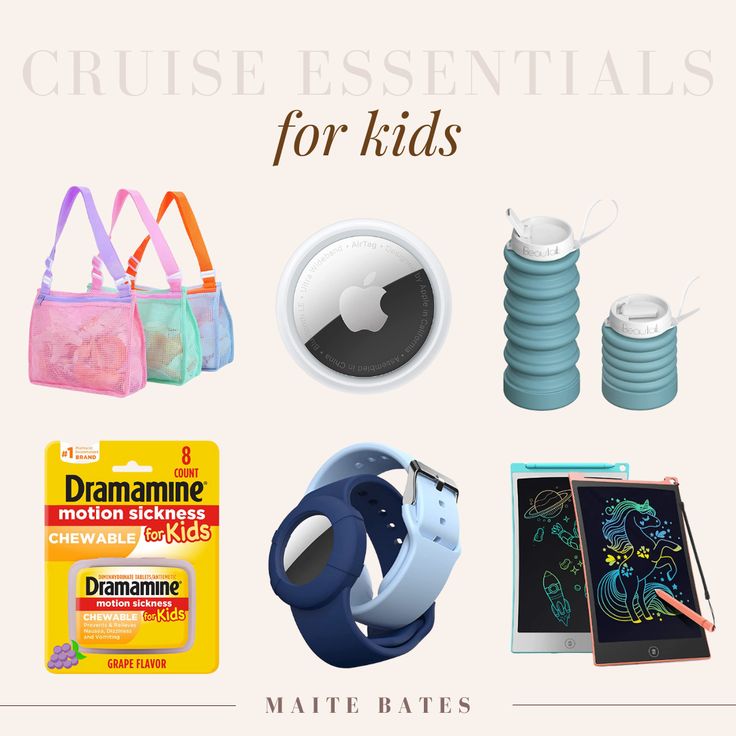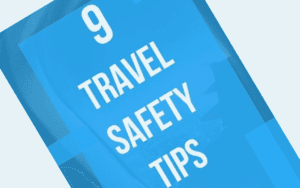Family vacations are all about creating unforgettable memories and spending quality time together, but when traveling with kids, safety becomes a top priority. Whether you’re exploring a new city or heading to the beach, ensuring your family’s well-being can sometimes feel overwhelming. Kids tend to be curious and full of energy, which is great for fun, but it also means they might not always be aware of potential risks.
Thank you for reading this post, don't forget to subscribe!That’s where preparation comes in. By planning ahead and following some simple safety vacation tips, you can ease many of the challenges that come with traveling as a family vacation. From knowing the local emergency numbers to packing a solid first aid kit, taking these precautions will help you relax, enjoy the trip, and focus on making memories—not worrying about what could go wrong.
In this guide, we’ll share 9 essential safety tips that will keep your family safe and sound on your next vacation, so everyone can enjoy the adventure to the fullest!
Family Vacation
When planning a Family Vacation, safety should always be a top priority to ensure everyone enjoys the trip worry-free. Before you hit the road or take to the skies, take a moment to go over some essential safety tips. First, make sure to pack a well-stocked first-aid kit that includes basic medications and any prescriptions needed for your family. Establish a family meeting spot in case anyone gets separated, especially in crowded places. Encourage kids to memorize important contact information, and consider using GPS tracking devices for younger children.
Always keep an eye on personal belongings, and teach your kids about the importance of being aware of their surroundings. Lastly, stay informed about local emergency numbers and the location of nearby hospitals or clinics. By taking these simple precautions, you can focus on making beautiful memories together without any unnecessary stress!
1. Research Your Destination Thoroughly

Before heading out on any family vacation, take the time to do a little homework about your destination. Understanding the local laws, weather conditions, and potential safety concerns can make a big difference in keeping your trip stress-free. For example, some countries may have strict rules about car seat usage, or certain destinations might have weather patterns that can affect your plans, like hurricane seasons or extreme heat.
When researching, also look into family-friendly activities, safe neighborhoods, and accommodations that cater to families. Not all areas are equally safe or welcoming for kids, so it’s important to choose places where everyone can relax and have fun. Look for accommodations with good reviews from other families, and check that they’re located in safe, well-lit areas.
Tip: Use travel forums or websites that focus specifically on family travel. These platforms often have real-life reviews and advice from other parents, giving you insider knowledge on the best places to stay, eat, and explore.
2. Keep Emergency Contacts Hand

When traveling with your family, especially to unfamiliar places, having emergency contacts at your fingertips is essential. Make a list of important numbers, such as local hospitals, your country’s embassy (if you’re traveling internationally), and the local police. Don’t rely solely on your phone—store these contacts on a piece of paper in case your phone runs out of battery or gets lost.
It’s also a good idea to teach your kids at least one important phone number by heart, whether it’s yours or another trusted family member. That way, even if they get separated, they can ask for help and easily contact you. A little preparation can make a big difference in keeping your family safe.
3. Ensure Everyone Has Travel Insurance
Travel insurance is one of those things you hope you’ll never need—but when something goes wrong, you’ll be glad you have it, especially on a family vacation. Kids are unpredictable, and accidents can happen, whether it’s a scraped knee while hiking or a sudden illness that requires a doctor’s visit. With travel insurance, medical emergencies are covered, so you don’t have to worry about high hospital bills in a foreign country.
Beyond health concerns, travel insurance can also protect you from the unexpected—like if your luggage gets lost at the airport or your trip gets canceled due to unforeseen events. Imagine arriving at your destination only to realize your bags are nowhere to be found, with your children’s clothes, toys, and essentials gone. Insurance helps ease the stress by covering the cost of those lost items.
When traveling with kids, it’s especially important to choose a policy that’s tailored to families. Some plans offer child-specific coverage, like emergency medical care for minors or extra help if a child loses a passport or gets sick abroad. This added peace of mind lets you enjoy your vacation without worrying about “what if” scenarios.
Tip: Look for travel insurance packages specifically designed for family vacation. These often come with discounts, and they’ll cover everyone under a single plan, which is both cost-effective and convenient.
4. Pack a First Aid Kit

When you’re heading out on a family vacation, packing a well-stocked first aid kit is one of the smartest things you can do. Trust me, having these supplies on hand can make all the difference vacation when little accidents happen—because they will. Whether it’s a scraped knee from a spontaneous adventure or a tummy ache from trying new foods, a good first aid kit helps you handle these bumps in the road without a hitch.
Here’s a list of essentials to include:
- Band-aids: These are your go-to for minor cuts and scrapes. Make sure to have a variety of sizes for different wounds.
- Antiseptic wipes: Perfect for cleaning wounds before applying a bandage, preventing infections.
- Medications: Pack any necessary over-the-counter meds your family might need, like pain relievers, antihistamines, or motion sickness tablets.
- Child-safe sunscreen: Protect your little ones’ delicate skin from sunburn, especially if you’re heading to a sunny destination.
And here’s a pro tip: Customize your kit based on where you’re going. For instance, if you’re traveling to a tropical area, add anti-mosquito spray to protect against bites. If you’re heading somewhere with a lot of outdoor activities, consider adding an instant cold pack or a burn cream.
Having a first aid kit not only gives you peace of mind but also keeps those unexpected scrapes and stings from turning into bigger problems. So, pack it up, and enjoy your vacation knowing you’re ready for whatever comes your way!
5. Discuss Safety Protocols with Your Kids

When traveling with your family vacation, talking about safety with your kids might not be the most exciting part of the trip, but it’s incredibly important. Here’s how to make these discussions effective and age-appropriate.
1. Talk About Stranger Danger Start by explaining to your kids in simple terms what “stranger danger” means. Let them know that while most people are friendly, they should be cautious and not go anywhere with someone they don’t know. Use examples they can understand: “If someone asks you to come with them or offers you something, remember to stay close to us and say ‘No, thank you.’”
2. What to Do if They Get Lost Discuss what your children should do if they get separated from the family vacation. Make it clear that it’s okay to ask for help if they’re lost. For younger kids, you can say something like, “If you can’t find Mommy or Daddy, look for a police officer or someone in a uniform and tell them you’re lost. They will help you find us.” For older kids, you might explain how to find a safe place and stay there until someone can help them.
3. Safe Behavior in Public Places Help your kids understand how to stay safe in crowded or unfamiliar places. Teach them to stay close to you and hold hands in busy areas. You can use playful reminders, like, “In crowded places, let’s stick together like glue!” Explain that if they need something, like a bathroom or a drink, they should always ask you first.
4. Create a Simple Action Plan Make sure your kids know what to do if they get separated. Create a plan together, so they feel more secure. For instance, you could agree on a meeting spot to go if you get separated, like a specific landmark or a familiar store. Practice this plan with them so it becomes second nature.
Tip: Wearable ID Bracelets To add an extra layer of security, consider getting your kids wearable ID bracelets. These bracelets can have your contact information, so if they get lost, someone can quickly get in touch with you. It’s a simple and effective way to make sure you can be reached if needed.
By having these conversations and making safety protocols part of your travel routine, you’re helping your kids feel more confident and secure, allowing everyone to enjoy the trip with peace of mind.
6. Monitor Weather and Travel Alerts
Staying informed about the weather and any travel alerts is crucial for a safe family vacation. Before you even set off, check the weather forecast for your destination on this vacation. This way, you can pack appropriately and plan your activities around the expected conditions.
Once you’re on your trip, keep an eye on local weather updates and any travel advisories. Weather can change quickly, so having real-time information is essential. Extreme weather events like storms or floods can disrupt your plans and pose safety risks, so knowing what to expect helps you prepare and adapt.
Make sure to talk to your kids about how to stay safe during severe weather. Explain what they should do if there’s a storm or if the area experiences heavy rain. Reassure them that you have a plan in place and that it’s okay to follow your instructions for their safety.
Tip: Download a reliable weather app on your phone before you enjoy the vacation . This will give you up-to-date weather alerts and help you make quick decisions, especially if you’re in an unfamiliar country. It’s a small step that can make a big difference in keeping your family safe and stress-free during your vacation.
7. Secure Accommodations and Transportation
When it comes to family vacations, finding the right place to stay and getting around safely is key. Start by choosing accommodations that are known for being family-friendly. Look for places with good safety reviews and features like childproofed rooms and secure surroundings. It’s not just about comfort; it’s about making sure your little ones are safe and sound.
Before you book, check that the place you’re staying has what you need. Are the rooms equipped with safety features for young children? Is the property in a safe neighborhood? Reading reviews from other families can give you a good idea of what to expect.
When it comes to getting around, double-check that any car seats or seat belts you’ll be using are correctly installed and appropriate for your child’s age and size. If you’re relying on public transport, make sure it’s safe and convenient for your family. Some public systems offer family-friendly options or have special guidelines for traveling with kids.
Here’s a helpful tip: Consider renting an apartment or a house instead of booking a hotel. This can give you more control over your environment and maintain better hygiene. Plus, having a full kitchen and extra space can make the trip more comfortable and manageable for everyone.
By taking these steps, you can ensure that your family vacation starts off on the right foot, with a safe and enjoyable environment for everyone.
8. Stay Aware of Food and Water Safety
When traveling, especially to new or foreign places, it’s really important to be careful with what you eat and drink. Different countries have different standards for food safety, and sometimes our stomachs aren’t used to the local cuisine. This is especially true for kids, whose digestive systems can be more sensitive.
To avoid any unpleasant surprises, like food poisoning or upset stomachs, it’s a good idea to carry safe snacks and bottled water for your kids. These can be lifesavers if you’re not sure about the local food or if you need something familiar and safe.
Here’s a handy tip: Before you go, do a bit of research on family-friendly restaurants in the area. Look for places with good hygiene ratings and menus that cater to kids. It’s always reassuring to eat at spots known for their cleanliness and child-safe options. This way, you can enjoy your trip without worrying too much about what’s on your plate!
9. Always Keep an Eye on Your Valuables
Traveling with your family is exciting, but it’s important to stay vigilant, especially when it comes to your valuables. Crowded places, like tourist attractions, markets, and busy streets, can be prime spots for pickpockets and theft. To keep your important items like passports, wallets, and electronics safe, consider using anti-theft bags or money belts. These handy accessories are designed to be more secure and less accessible to potential thieves.
Hotel safes are another great option for storing valuable items when you’re not using them. Make sure to use these safes whenever you can, especially if you’re leaving the hotel room for a while.
Here’s a tip: Talk to your older kids about the importance of keeping an eye on their own belongings, too. Remind them to be aware of their surroundings and to keep their personal items close. A little extra caution can go a long way in preventing theft and ensuring a smooth, worry-free family vacation.
Conclusion
Planning and staying vigilant are crucial when it comes to ensuring a safe and enjoyable family vacation. By following these tips, you’re not only safeguarding your family but also setting the stage for a stress-free trip. With the right preparation, you can focus more on making memories and less on worrying about potential issues.
Remember, the goal is to create a fun and relaxing experience for everyone. Safety is the foundation that makes a great vacation possible, allowing you to fully enjoy every moment without unnecessary stress. So, take these precautions seriously, and let your family adventure be filled with joy and unforgettable moments!
If you want to read more about the vacation click here






